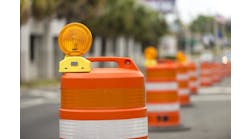The New Jersey Center for Automated Road Transportation Safety at Fort Monmouth was announced this week after more than three years of planning and organization. The (501(c)(6)) nonprofit New Jersey Corporation’s mission is to substantially improve safety on existing conventional roadway infrastructure through the use of inexpensive automated collision avoidance systems installed on individual vehicles which can operate smoothly with conventional vehicles throughout most, if not all, existing roadways. The Center’s mission crosses all transportation modes that access the U.S road system.
The governing board of trustees will focus on strategies and programs to optimize the conversion of the 1,100-acre former U.S. Army base into a facility for the research, development, certification, and commercialization of autonomous collision avoidance technology for automobiles, buses, and trucks.
Dr. Alain L. Kornhauser, Professor of Financial Engineering and Operations Research at Princeton and Director of the Princeton Autonomous Vehicle Engineering program (PAVE), who is leading the board, said, “Our research shows that the expected future value of the savings associated with collision avoidance will far outweigh the cost of the technology, making the case for autonomous driving technology a long term economic no-brainer. In terms of the social cost of crash avoidance, the benefits are obviously immeasurable. However, while some aspects of autonomous driving are already in market, Electronic Stability Control, for example, which effectively takes over when I make a potentially fatal driving error, a tremendous amount of work lies ahead to get the required technologies from the lab to the road. Today we’ve created through the Center the core components—the perfect facility, and the key stakeholders—focused to develop a world class environment to address these challenges.”
The use of automated collision avoidance technologies that exceed crash mitigation will be the principal conventional focus of highway safety within the Center—to wit, crash avoidance. Moreover, the Center will focus on technologies that are vehicle-based requiring only that the neighboring vehicles operate conventionally according to conventional rules-of-the-road and human driving behaviors. This objective will enable fleet operators to substantially improve the safety of the drivers that they employ.
It is expected that these objectives will lead to the development of inexpensive collision avoidance technologies that will substantially accelerate the commercialization of such technologies. Dr. Kornhauser said, “We will initially focus on specifications for new trucks and buses which have not received the same level of attention as autos. In addition, the advancement of those aftermarket technologies to the used car fleets as well as improved sensors will also be pursued early on.”


